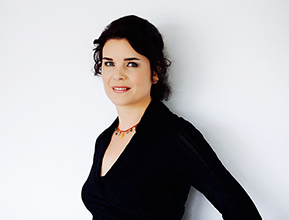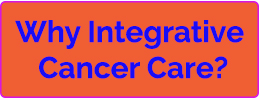“Imagery is all the uses of the imagination. Imagery is one of the most powerful ways our mind communicates with the body.”
-O. Carl Simonton, MD
What is imagery?
Imager y resides at the core of the mind-body connection. The mental images that you use moment to moment in your life shape your body, mind, and spirit. A mental image is defined as a thought with sensory qualities impacting what you mentally see, hear, taste, smell, touch, or feel. The images coming from your thoughts are how you store and process information. Exploring imagery is an important component of investigation and focus for people affected by cancer. One of the oldest forms of medicine, imagery strengthens both cancer patients and caregivers.
y resides at the core of the mind-body connection. The mental images that you use moment to moment in your life shape your body, mind, and spirit. A mental image is defined as a thought with sensory qualities impacting what you mentally see, hear, taste, smell, touch, or feel. The images coming from your thoughts are how you store and process information. Exploring imagery is an important component of investigation and focus for people affected by cancer. One of the oldest forms of medicine, imagery strengthens both cancer patients and caregivers.
How do mental images impact who we are?
Mental images help form the blueprint for who you think you are defined by your beliefs. Focusing on healthy mental images and cultivating awareness for patterns associated with unhealthy images helps support optimal vitality. Imagery helps you work with memories and future possibilities through the present moment.
“Mental images, formed long before we learn to understand and use words, lie at the core of who we think we are, what we believe the world is like, what we feel we deserve, what we think will happen to us, and how motivated we are to take care of ourselves. These images strongly influence our beliefs and attitudes about how we fall ill, and what will help us to get better.”
-Academy of Guided Imagery
What is guided imagery?
Forms of guided imagery include various techniques such as visualization, active imagination, drawing, metaphor, storytelling, fantasy exploration, game playing, and dream interpretation. In guided imagery, the unconscious appears as images communicating with the conscious mind. Through the healing process, guided imagery provides new insights and the opportunity to shift relationships with reality.
People affected by cancer benefit from creating guided imagery that supports their health and healing. Guided imagery is a technique to direct your attention and resource yourself. The places where you focus your attention communicate messages to your body, mind, and spirit. Forming and applying guided imagery through your cancer experience is a tool for enhanced strength in your daily life.
What are the potential health benefits of imagery for cancer patients?
In Fighting Cancer From Within, Dr. Rossman writes about the following potential health benefits of imagery for people affected by cancer.
- Relieves stress, anxiety, and depression
- Reduces pain
- Stimulates the immune system
- Prevents or reduces nausea from chemotherapy drugs
- Prevents complications and pain after surgery
- Reduces distress during radiation therapy
- Expands awareness for body, feelings, mind, and spirit
- Resolves or aids coming to terms with inner conflicts
- Supports accessing strength and courage
- Connects creativity and problem-solving abilities
- Enhances intuitive abilities and helps with decision making
- Helps with clarifying and refining communications with others
- Enhances connection with spirituality
- Supports finding peace of mind
What helps make imagery for cancer effective?
Since guided imagery is the mental picturing, or sensing, thinking, and feeling of a desired outcome or focus of inquiry, there are specific approaches that can support imagery associated with cancer. In Getting Well Again, O. Carl Simonton, MD outlines eight components for effective mental imagery. Dr. Simonton recommends using enthusiasm, joy, and vitality in visualizations.
1. The cancer cells are weak and confused. The cancer cells are depicted as soft and able to be broken down.
2. The treatment is strong and powerful. The imagery communicates the belief that the treatment is clearly capable of destroying the cancer. It is strengthened if there is ample interaction between the treatment and the cancer.
3. The healthy cells have no difficulty repairing any slight damage the treatment might do. For people receiving treatments impacting all cells and not just cancer cells, the normal, healthy cells are seen as strong and capable of sustaining little damage and repairing minimal damage. The cancerous cells are destroyed by the treatment because they are weak and confused.
4. The army of white blood cells is vast and overwhelms the cancer cells. The white blood cells are a symbol of the body’s natural healing process. Visualizations and imagery reflect large amounts of strong white blood cells. The victory of the white blood cells over the cancer is seen as inevitable.
5. The white blood cells are aggressive, eager for battle, and quick to seek out the cancer cells and destroy them. Since white blood cells are a symbol of defense and recovery, they appear intelligent, capable, and strong. The white blood cells overwhelm the cancer cells and leave no doubt about which cells are stronger.
6. The dead cells are flushed from the body normally and naturally. Flushing dead cells from the body is a natural process, and imagining it communicates confidence in the body’s normal functioning.
7. By the end of the imagery, you are healthy and free of cancer. This image represents the desire for the final outcome, and it is important to see the body clearly as healthy, vital, and energetic.
8. You see yourself reaching your goals in life and fulfilling your life’s purpose. This imagery communicates powerful reasons for living. It confirms confidence in recovery and a commitment to living.
What are some additional tips for making imagery more powerful?
In Fighting Cancer From Within, Dr. Rossman provides these suggestions for making imagery more powerful.
- Take the time to relax and focus inside
- Practice regularly
- Reinforce your healing imagery by thinking of it often
- Pay attention to the images that spontaneously form when you focus on healing
- Use multiple views of your healing
- Use multiple senses in your imagery
- Make your imagery congruent with your treatment choices
For More Information
- Academy of Guided Imagery
- Belleruth Naparstek
- The Center for Mind-Body Medicine
- Getting Well Again by O. Carl Simonton, MD
- The Healing Mind with Martin L. Rossman, MD
- Simonton Cancer Center





